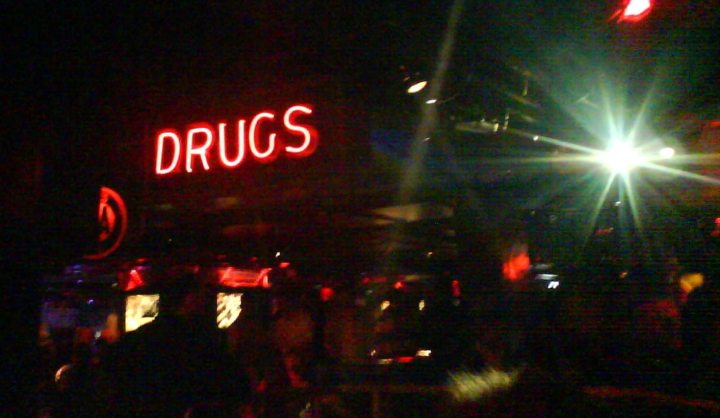ISS Today
Threat of new designer drugs for southern Africa

The global growth in psychoactive substances and their low cost is a risk for several countries in the region. Richard Chelin and Martin Ewi for ISS TODAY
First published by ISS Today
Designer drugs are among the fastest-growing and most versatile substances in the global illicit drugs economy. Known as ‘new psychoactive substances’, these synthetic drugs are developed to mimic the effects of established illicit drugs, such as cannabis, cocaine, ecstasy and LSD.
The relatively low cost of synthetic drugs compared with traditional drugs – and the general belief that they are legal because there are no specific laws regulating them – have made designer drugs particularly attractive to young people worldwide.
The global proliferation of these substances has increased Africa’s vulnerability to drug abuse, with 18 countries on the continent reporting on the presence of designer drugs in 2017, according to the United Nations Office on Drugs and Crime (UNODC). Although few Southern African countries have identified and reported the use of these substances, indications are that young people in the region are increasingly using them.
Last year, a range of incidents in South Africa resulted in the deaths and hospitalisation of several people after they consumed unknown drug concoctions. This provided a glimpse of the risks posed by these psychoactive substances. They are believed to be more dangerous than ‘traditional’, so-called organic drugs, like cocaine and heroin. (The difference between synthetic and organic drugs is that the latter is extracted from plants and animals, while the former is produced chemically in labs.)
Studies have linked designer drugs with conditions such as a sudden increase in body temperature and heart rate, coma, damage to internal organs, vomiting, confusion leading to aggression and violence. Other symptoms include paranoia, convulsion, psychosis, seizures and death.
Controlling the manufacture and spread of synthetic drugs is difficult. At a conference in late 2018, delegates from the three Southern Africa countries most affected by new psychoactive substances (Mauritius, Seychelles and South Africa) heard that in Europe, where there is a strict and highly advanced monitoring system, “New drugs are detected on a weekly basis, and the overall availability of new psychoactive substances continues to grow.”
It is estimated that around 730 new psychoactive substances were identified globally in 2016. By the end of 2018, UNODC reported that this number had grown to 888.
The market is highly dynamic and complex due to the diversity of these drugs, multipurpose production laboratories and constant innovations in the mixture, packaging and naming of the substances. The drugs also vary from place to place and from producer to producer, making tracking and monitoring a major challenge.
The sheer size of the market value – estimated at €1.2- to €2.5-billion annually – has been influenced by key characteristics of these psychoactive substances. Chief among them is their versatility, which has contributed to innovative methods of concealment.
Because of their comparatively low prices, the drugs are particularly appealing to people from lower income brackets. Conditions such as limited disposable income, therefore, make the drugs even more attractive.
The most frequently reported semi-synthetic drug in Southern Africa is nyaope, also known as whoonga – a cocktail of heroin, cannabis and antiretroviral drugs. One former drug addict, speaking on condition of anonymity, told researchers from the ENACT project that a dose of this highly toxic mixture costs between R15 and R25 (under US$2).
Speakers at the Southern Africa conference stressed the role that the internet plays in the distribution and sale of synthetic drugs, which contributes to the growing challenge. A large number of transactions occur online, most often through the Dark Web – or specifically on what has been described as “hidden web cryptomarkets”, where cryptocurrencies such as Bitcoin and Litecoin are widely used to prevent transactions from being traced.
Delegates heard that the untrammelled use of cyberspace has enabled universal distribution and trafficking of synthetic substances. Cyberspace provides anonymity, and the Internet offers a platform for buyers and sellers to meet and facilitates door-to-door delivery of drugs. This is a growing trend and there is every indication it could get worse if steps aren’t taken to mitigate the situation.
Governments could adapt their existing drug laws to deal with new psychoactive substances. In Ireland for example, a specific act prohibits the import, export and sale of any addictive or harmful psychoactive substances for human consumption. Other steps include a greater investment in prevention and treatment, and using research to develop better policing and drug control methods. Training police in new trends is key, as is information sharing among neighbouring countries.
Although the threat of synthetic drugs is relatively new to Southern Africa, it is becoming a notable risk for several countries in the region. Early action can prevent the problem from growing. DM
Richard Chelin is a Researcher and Martin Ewi, Research Co-ordinator, ENACT project, ISS
This article was first published by the ENACT project. ENACT is funded by the European Union (EU). The contents of this article are the sole responsibility of the author and can under no circumstances be regarded as reflecting the position of the EU.


















 Become an Insider
Become an Insider